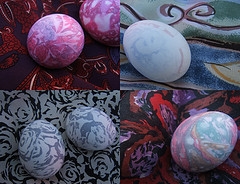
youtubevid_0001.wmv

youtubevid_0001.wmv

© 2010, MLegFashions.com
Your Best Source for Hosiery, Slippers and Socks
Featuring Popular and Hard-to-Find Sizes & Styles!
You have purchased hosiery for years I’m sure, but did you know that there are some simple ways you can extend the life of your pantyhose, tights, leggings and even socks?
Here are our 6 easy tips for you:
1. Care: Be sure to maintain well-manicured fingernails and toenails especially nail tips and cuticles. You can smooth over all nails easily with an emery board. Also apply ample amounts premium botanical hand lotion or other fine skin care creams to hands, legs and feet.
2. Laundry: Wash hosiery in cold water by hand on the inside out, as dry skin and lint particles typically remain on the inner side of most stockings and hose. For nylon hosiery, a fabric softer, such as Downey, is the best suited for washing, since it is mild and does not contain bleach. Rinse in cold water. Dry hosiery horizontally on a towel. Do not hang dry or machine dry.
3. Sizing: If you are between two hosiery sizes, it is advised to purchase the larger of the two. Hose that do not fit properly are not only uncomfortable but are also more prone to runs. Reinforced-toe hosiery fits better and should thus likely wear longer. Both sandal-toe and reinforced-toe hosiery should be loosened by pulling them away from the toe at least ½ inch. This should be performed immediately after putting them on, as well as twice in the morning and twice in the afternoon. A stocking that is too tight can do more physical skin and tissue damage than a shoe that is too tight. Tight hosiery often interferes with circulation.
4. Damage: The greatest opportunity for hosiery damage is when they are first worn, as well as when they are pulled down and then quickly raised up during use of the restroom. During these rushed instances, hosiery wearers tend to pull harder than they likely realize.
5. Thigh-Highs: We recommend that all of our customers try this dynamic hosiery. Thigh-Highs are the answer to many hosiery issues. They are economical, cool in the summer, excellent for maternity usage, and, of course, men love them on their ladies, too!
6. Support Leg Wear: Knee-highs, thigh-highs, regular stockings and panty hose are all support leg wear. All of these items can aid in leg circulation and help to ease tired legs. Support leg wear will not, however, prevent varicosities. Support leg wear hosiery comes in varying degrees of sheerness. If a doctor or medical professional recommends support hosiery, be sure to determine whether you are instructed to purchase regular support hose or “medical support” hose, which can be found in pharmacies and medical supply stores.
http://www.mlegfashions.com
Toll Free: (800) 428-3456 Local Tel: (818) 758-9200
Email: customerservice@mlegfashions.com
© 2010; MLegFashions. All Rights Reserved.
About the Author
Customer Service Associate
MLegFashions
http://www.mlegfashions.com
Toll Free: (800) 428-3456
Local Tel: (818) 758-9200
Email: cwilson@mlegfashions.com
Pink pantyhose/tights

How they look and what they wear is extremely important to some individuals. They have closet upon closet stocked with clothing for every day of the week, month and/or year. Others are more nonchalant, sticking to a few outfits designated for daily or special occasion wear. Whatever your preference there are a few things you should consider when hanging and storing clothing.
Basically, metal hangers are cheapest type and the most commonly available. They are not, however, the best for your clothing. Depending upon their structure, they can damage your clothes, stretching them out of shape. Plain, wire hangers can leave rust markings and they are not always the sturdiest, bending under the weight of heavier clothing.
Select plastic or purchase padded wire hangers. They will not stain your clothes, nor stretch them unduly. Your sheer blouses and delicate outfits fare better with this type of hanger.
In some instances, it is better to rely on hooks. They can be hung over a closet, bathroom or bedroom door. Built to last, they can take the extra weight of heavy garments such as bathrobes. Pajamas and other casual wear-at-home clothing can be hung from hooks without worrying about wrinkling or damage. Furthermore, one particular hook can be set aside to be used to hang your clothing for the next day.
Do not use dry cleaning bags. They do not allow anything to breathe. The same can be said of placing some clothing within plastic or air tight containers. Wool and silk are two materials that need to breathe. Keep them in out of plastic and away from air tight containers.
If you wish, you can use a garment bag for storage of bulky items such as sweaters or for simple t-shirts and blue jeans. It is not, however, necessary to hang either jeans or t-shirts. They can be placed on shelves or in your dresser drawers. Socks and panty hose can be placed in drawers, but they can also be hung in the closet in a shoe bag or large cloth bag. The advantage of using a shoe bag is you can organize the socks and hose by types.
Organization is the key to proper storage of clothing. You can orderly place your clothing in any number of ways. They can be hung according to function: blouses, shirts, skirts, etc., color and/or length. In some closets where the levels vary, either naturally or through the addition of stackable containers, it might be easier to hang them according to length.
There are some sections considered necessary when you divide your clothing. If you have special clothing, party dresses, and other special occasional clothes you might want to put them in a less prominent place. As for the seasonal clothing, place them in a storage area. They can be hidden high up on a top shelve or put at the very back of the closet. It all depends upon your closet’s capabilities.
There is one school of thought that encourages discarding all poles, replacing them with shelving. This might seem like a good idea, but it does not take into consideration wrinkling and the “fear of ironing” syndrome.
One final thought. When organizing your closet always sort through what you have and discard what you don’t need, never wear and no longer fit into. Culling your closet will make it easier for you to hang and store all your clothing.
About the Author
Hunter Pyle wrote this article to talk about organizing your closet for proper storage. Check out
Get Organized
or
Kitchen and Much More
for some more organizing ideas.
Sophisticated Brunette In Silk Pantyhose Tries On Hot Heels!